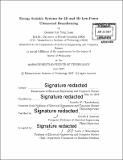| dc.contributor.advisor | Anantha P. Chandrakasan and Gerald J. Sussman. | en_US |
| dc.contributor.author | Lam, Bonnie K. Y. (Bonnie Kit Ying) | en_US |
| dc.contributor.other | Massachusetts Institute of Technology. Department of Electrical Engineering and Computer Science. | en_US |
| dc.date.accessioned | 2017-10-18T15:09:23Z | |
| dc.date.available | 2017-10-18T15:09:23Z | |
| dc.date.copyright | 2017 | en_US |
| dc.date.issued | 2017 | en_US |
| dc.identifier.uri | http://hdl.handle.net/1721.1/111904 | |
| dc.description | Thesis: Ph. D., Massachusetts Institute of Technology, Department of Electrical Engineering and Computer Science, 2017. | en_US |
| dc.description | Cataloged from PDF version of thesis. | en_US |
| dc.description | Includes bibliographical references (pages 119-125). | en_US |
| dc.description.abstract | In traditional ultrasound imaging systems, bulky and power-intensive mainframes are used to process the high number of waveforms acquired in parallel from a large transducer array. The computational power of these systems scales linearly with transducer count. However, there exist applications where basic functionality in low-power conditions may be favorable to an "all-or-nothing" system that only produces a high resolution image when enough power is supplied. This thesis presents systems designed to support energy-scalability at run-time, enabling the user to make the tradeoff between power and performance. First, a system-level energy model for a receive-side digital beamforming system is presented. Power-performance tradeoffs for the analog front-end, analog-to-digital converter, and digital beamformer are analyzed individually and then combined to account for the performance dependency between the functional components. These considerations inform a recommendation on design choices for the end-to-end system. Second, this thesis describes an energy-scalable 2-D beamformer that provides user-controlled run-time tradeoff between image quality and energy consumption. Architectural design choices that enable three operating modes are discussed. A test chip was fabricated in 65-nm low power CMOS technology. It can operate with functional correctness at 0.49 V, with a measured power of 185 [mu]W in real-time operation at 0.52 V. Finally, a software-based energy-scalable 3-D ultrasound beamformer is implemented on an embedded supercomputer. The energy consumption and corresponding imaging quality are measured and compared. | en_US |
| dc.description.statementofresponsibility | by Bonnie Kit Ying Lam. | en_US |
| dc.format.extent | 125 pages | en_US |
| dc.language.iso | eng | en_US |
| dc.publisher | Massachusetts Institute of Technology | en_US |
| dc.rights | MIT theses are protected by copyright. They may be viewed, downloaded, or printed from this source but further reproduction or distribution in any format is prohibited without written permission. | en_US |
| dc.rights.uri | http://dspace.mit.edu/handle/1721.1/7582 | en_US |
| dc.subject | Electrical Engineering and Computer Science. | en_US |
| dc.title | Energy scalable systems for 2D and 3D low-power ultrasound beamforming | en_US |
| dc.type | Thesis | en_US |
| dc.description.degree | Ph. D. | en_US |
| dc.contributor.department | Massachusetts Institute of Technology. Department of Electrical Engineering and Computer Science | |
| dc.identifier.oclc | 1005139139 | en_US |
